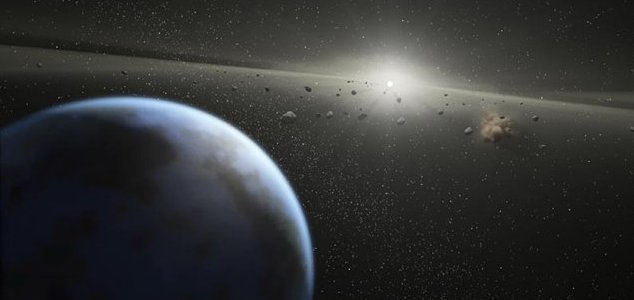Space & Astronomy
July 22, 2014 · 8 comments
8 comments

The planet has an orbital period comparable to that of Mars. Image Credit: NASA
At a distance of 177 million kilometers from its parent star, which is much cooler than the sun, the planet is around the size of Uranus and is believed to see temperatures of around -93C.
With an orbital period of 708 days the planet orbits further from its star than the Earth does from the sun but is closer to it than Mars, which at a distance of 228 million kilometers takes 780 days to complete one circuit.
"Finding Kepler-421b was a stroke of luck," said study author David Kipping. "The farther a planet is from its star, the less likely it is to transit the star from Earth's point of view. It has to line up just right."
Source: BBC News | Comments (8)
Exoplanet with longest year discovered
By T.K. RandallJuly 22, 2014 ·
 8 comments
8 comments
The planet has an orbital period comparable to that of Mars. Image Credit: NASA
Astronomers have identified an extrasolar planet that takes 708 days to complete one orbit of its star.
Named Kepler421-b, the distant world is located approximately 1,040 light years away and was discovered using observations from NASA's Kepler Space Telescope.At a distance of 177 million kilometers from its parent star, which is much cooler than the sun, the planet is around the size of Uranus and is believed to see temperatures of around -93C.
"Finding Kepler-421b was a stroke of luck," said study author David Kipping. "The farther a planet is from its star, the less likely it is to transit the star from Earth's point of view. It has to line up just right."
Source: BBC News | Comments (8)

The Unexplained Mysteries
Book of Weird News
AVAILABLE NOW
Take a walk on the weird side with this compilation of some of the weirdest stories ever to grace the pages of a newspaper.
Click here to learn more

Support us on Patreon
BONUS CONTENTFor less than the cost of a cup of coffee, you can gain access to a wide range of exclusive perks including our popular 'Lost Ghost Stories' series.
Click here to learn more
Ancient Mysteries and Alternative History
Extraterrestrial Life and The UFO Phenomenon
UK and Europe
Unexplained TV, Books, Film and Radio
Total Posts: 7,779,943 Topics: 325,660 Members: 203,950
Not a member yet ? Click here to join - registration is free and only takes a moment!
Not a member yet ? Click here to join - registration is free and only takes a moment!



































Please Login or Register to post a comment.